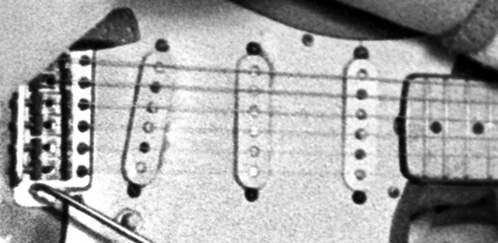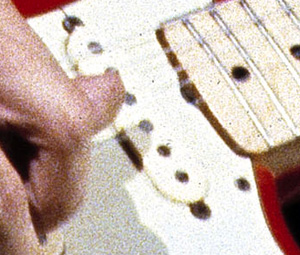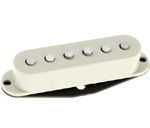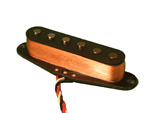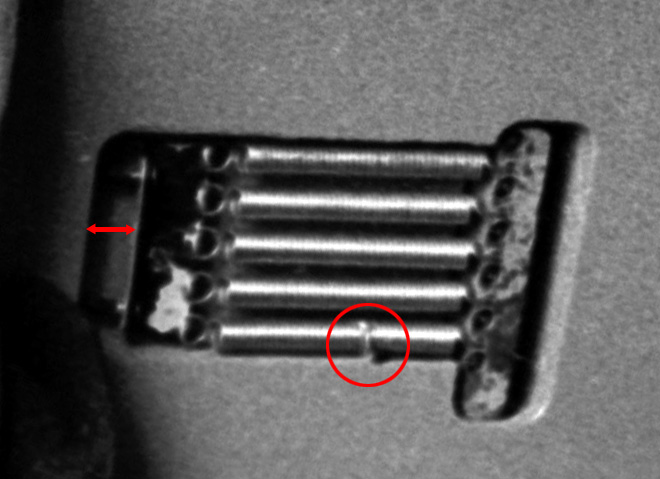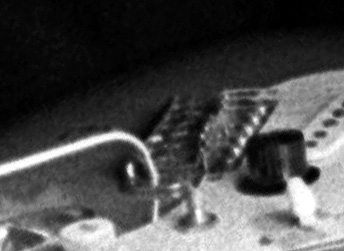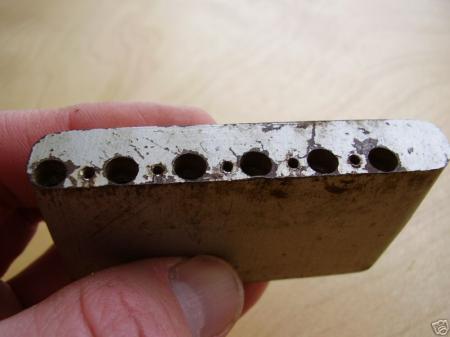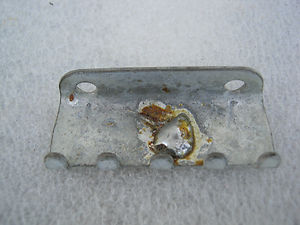Location of the Strap Button on the Maple Neck Strat
When Mark Knopfler started with Dire Straits in 1977, he played two different Stratocasters. One of these had a laminated maple fingerboard and some other modifications, including one of the strap buttons at the back side of the guitar. Unfortunately photos that show the exact location of this button – is it near the neck plate or is the button held by one of the four neck screws – do not exist. With this blog post I will try to locate the button as close as possible with the help of the pictures and video we have.
I have two Strats with a strap button on the back. On one it is held buy one of the neck screws, on the other it is screwed to the body wood near the neck plate, see the following pictures.
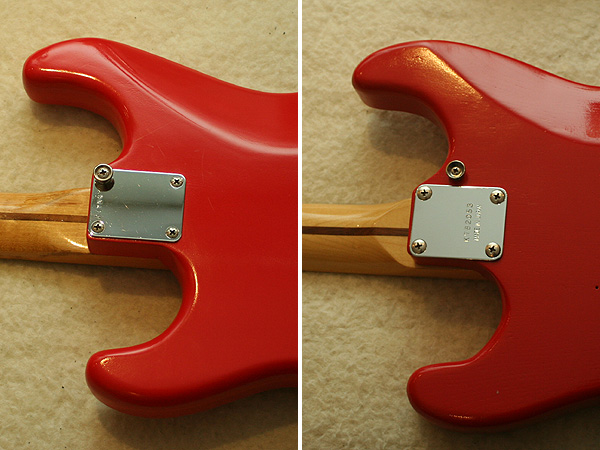
Let’s now have a look at the first picture of Mark’s guitar now. It is from early 1978 and shows the guitar with the narrow brown leather strap Mark used back then.
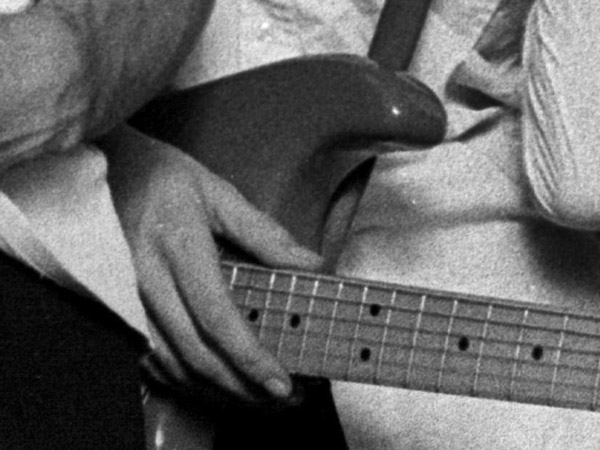
We can see that the strap runs along the inner side of the cutaway. I then tried to place my two guitars into a similar view angle as in the picture with Mark’s guitar.
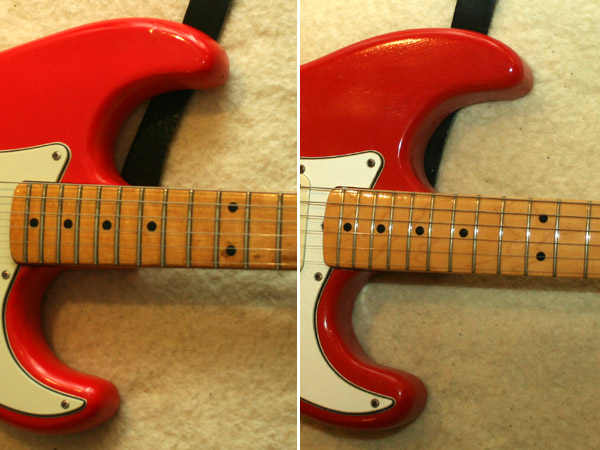
So by now we can be almost sure that the strap button on Mark’s guitar was not held with one of the neck screws (with the inner screws the result would even be worse as you could not see the strap at all then).
Theoretically the button can still be located near the neck plate as on mine guitar, or further down on the same line, e.g. just in the middle of the neck plate. To find out more, I will compare pictures with the wide Music Man strap next. The Music Man logo on the strap can partly be seen behind Mark’s guitar on several pictures. As I have an identical strap, I might place the strap similar and check where the hole at the end of the strap sits.
Here is a picture of Mark’s guitar again.
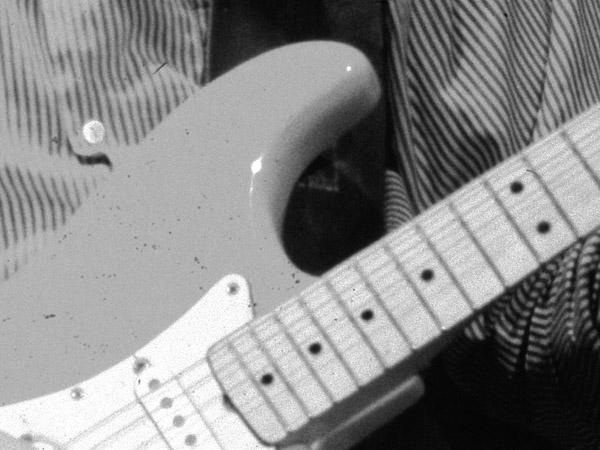
A similar angle view on my guitars:
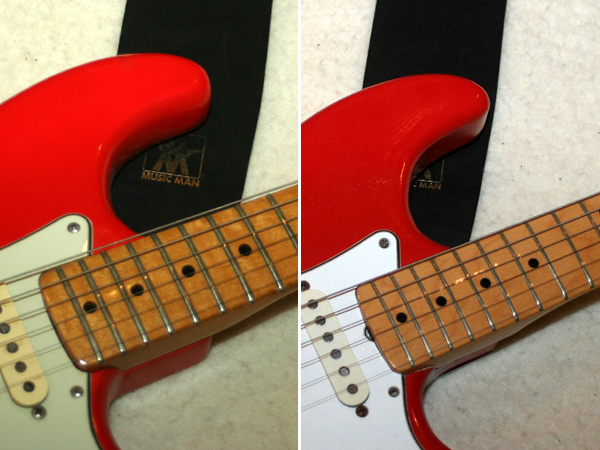
Finally I move the Music Man strap around a bit to find even better alternatives.
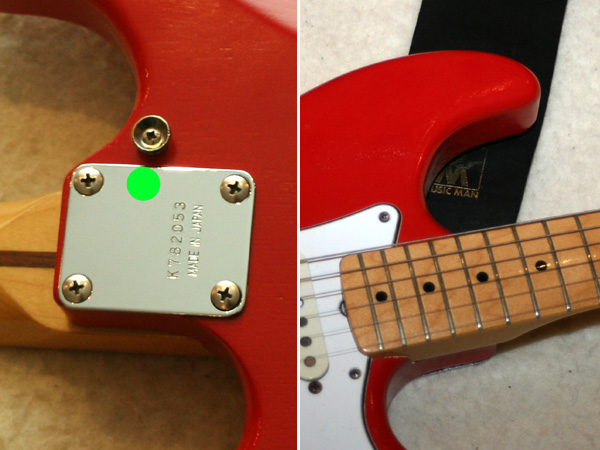
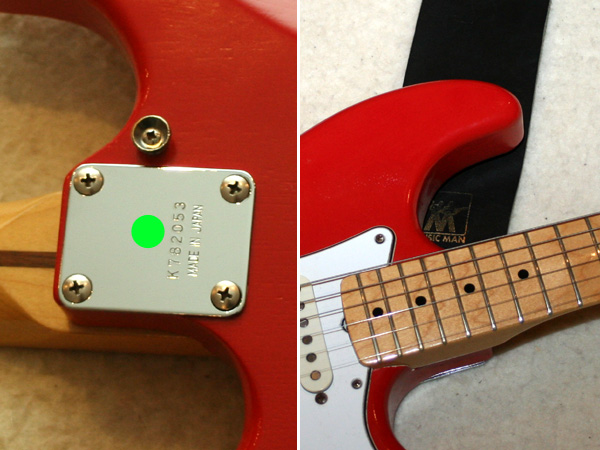
It turns out that in fact the most accurte placement seems to be as it is on this guitar. The real position can only differ about some millimeters or 1 – 2 centimeters at the maximum (+/- ca. 0.5 “).
Why the strap at the back?
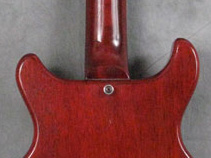
Mounting the strap button at the back of the guitar has in fact some advantages. Even with a wide strap like the Music Man strap, the strap lies flat to your body which feels (and looks) a bit different, maybe better. And we must not forget that the guitar that Mark Knopfler mainly played before getting his first Strat in 1977 was a 1959 Les Paul Special. On this the strap button is located at the neck heel (see picture) so this is what Mark was used to, and it makes sense that he asked the luthier who did the modifications on that guitar to mount it there as well.
If you want to place the strap button on the back of your guitar, you might nevertheless do it as I did with the other guitar. You only have to widen the hole in the strap button (I used a drill) and use the same screw to hold it. From my experience the neck will sit firmly enough with one screw not in completely. You can undo this mod any time.
If you decide to screw the button into the wood, you might use a piece of clear masking tape and drill through it. This should prevent from cracking the finish around the hole while drilling. Remove the tape after the job is done.
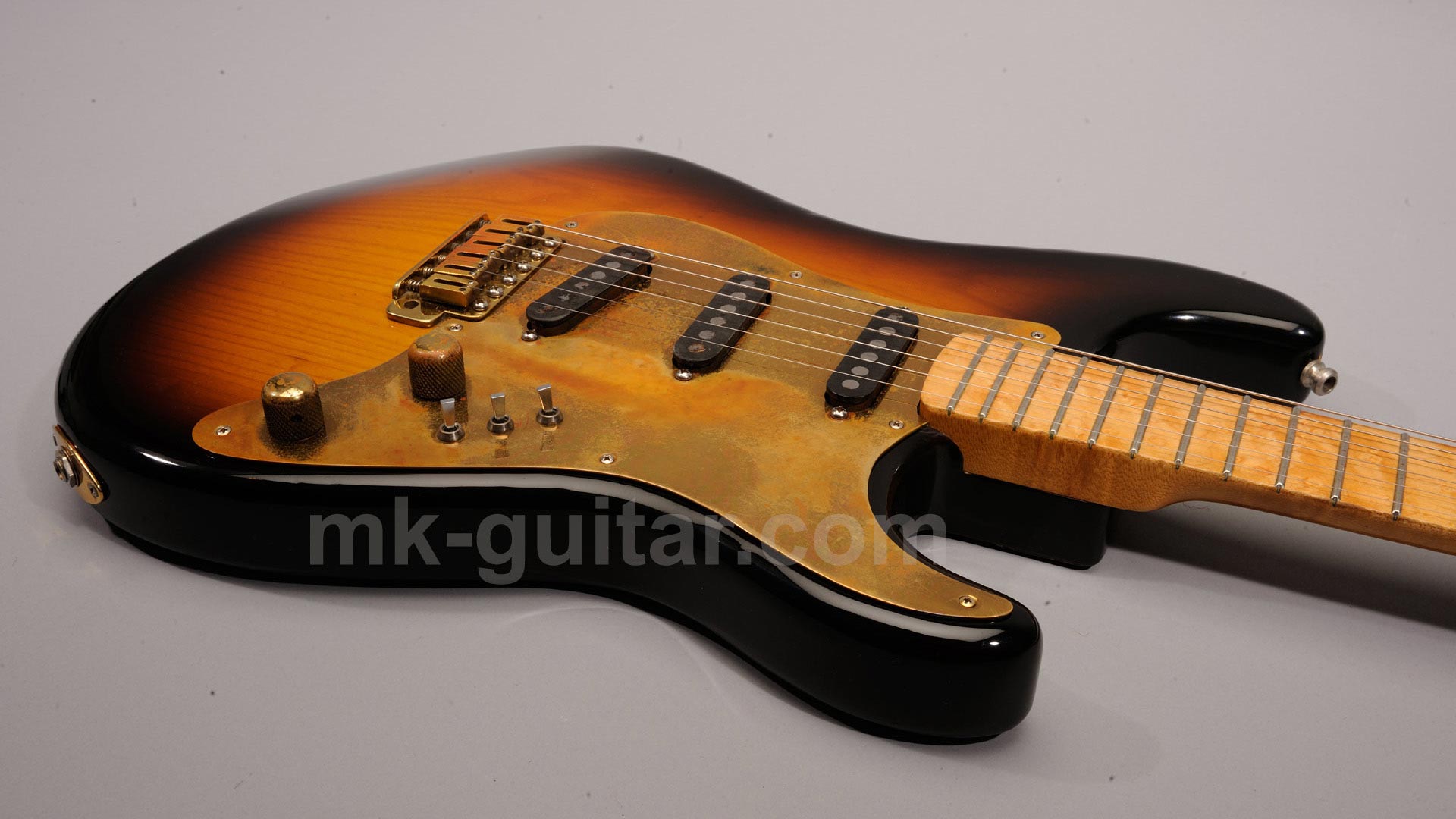
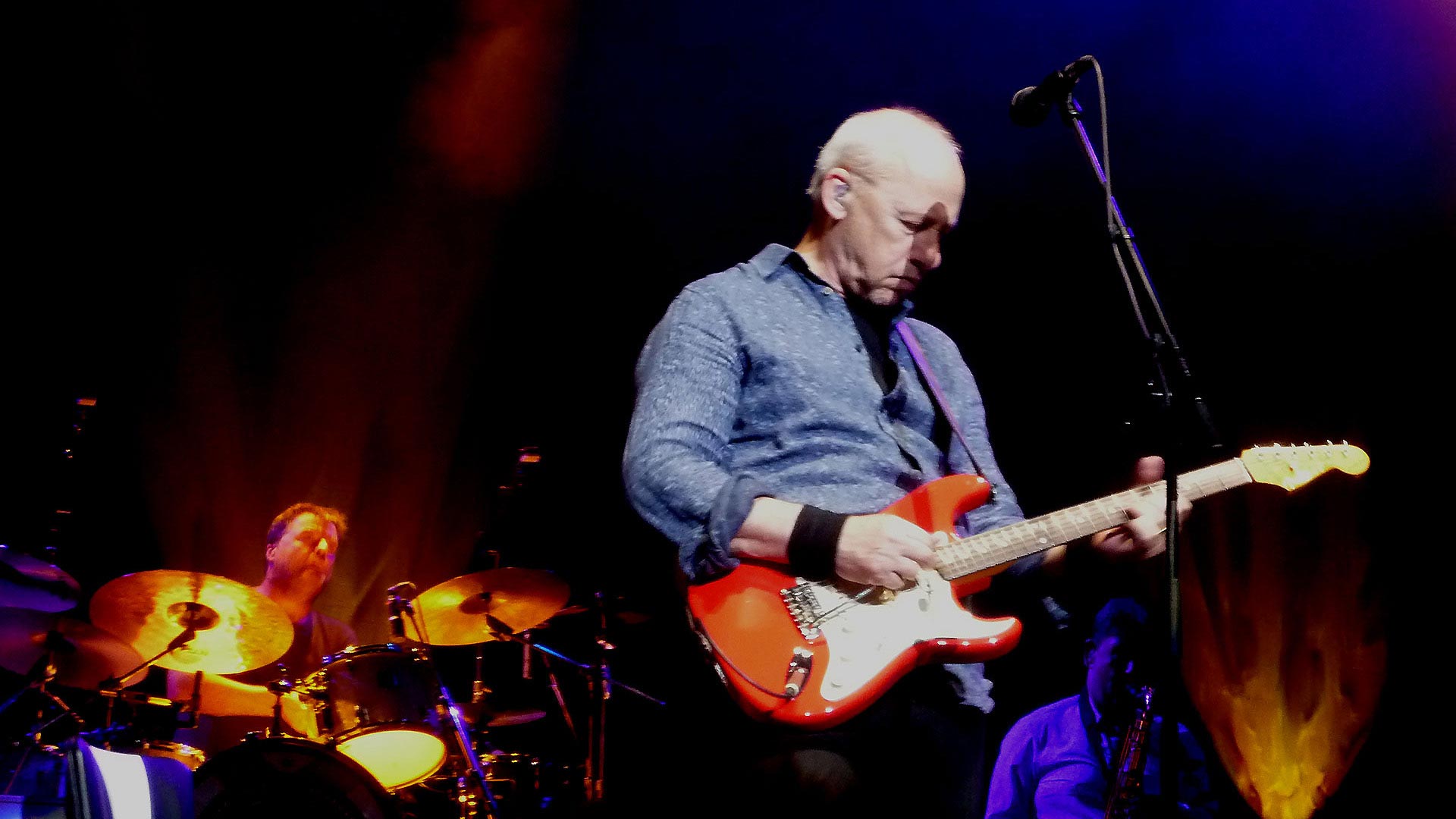
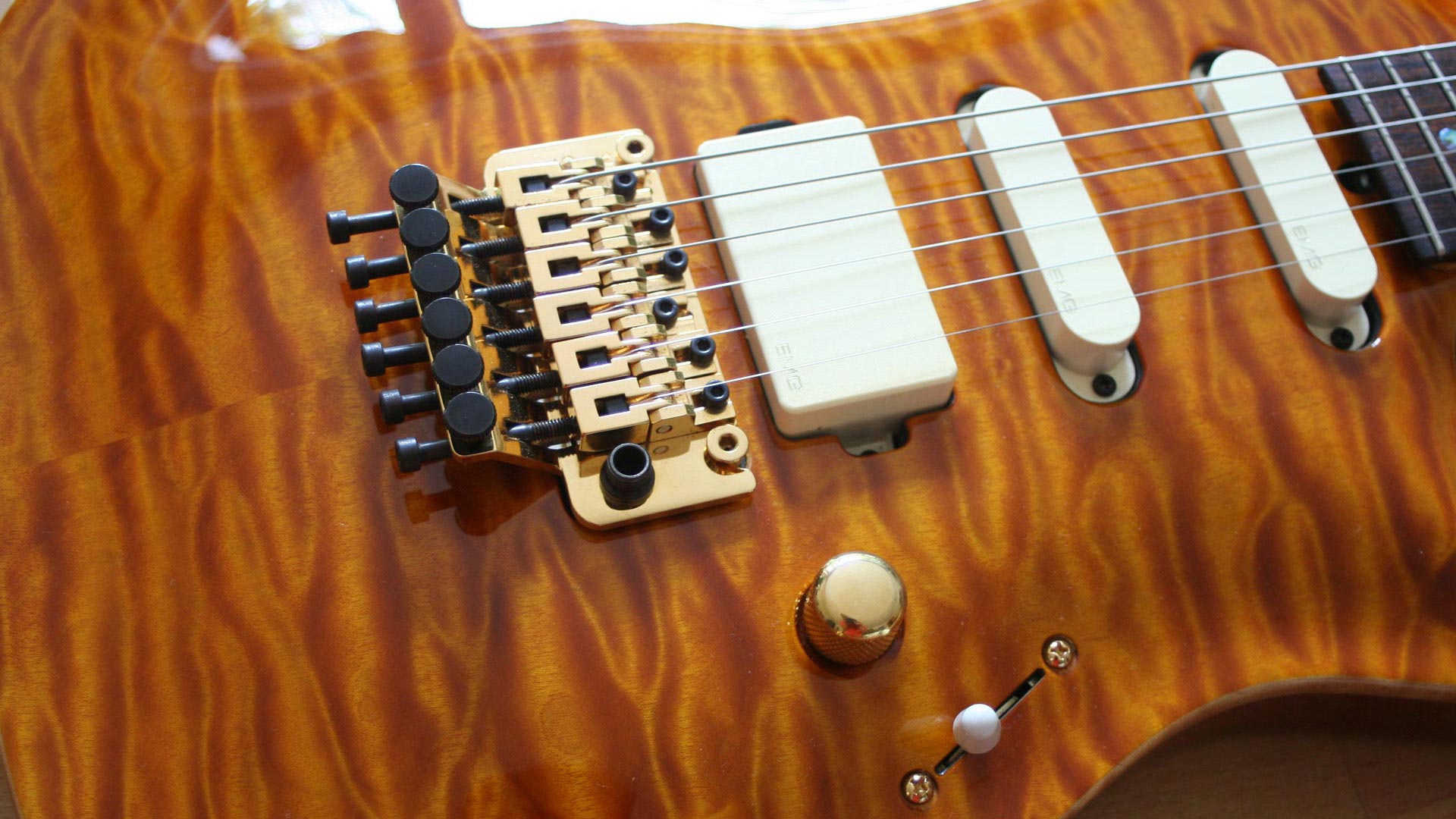
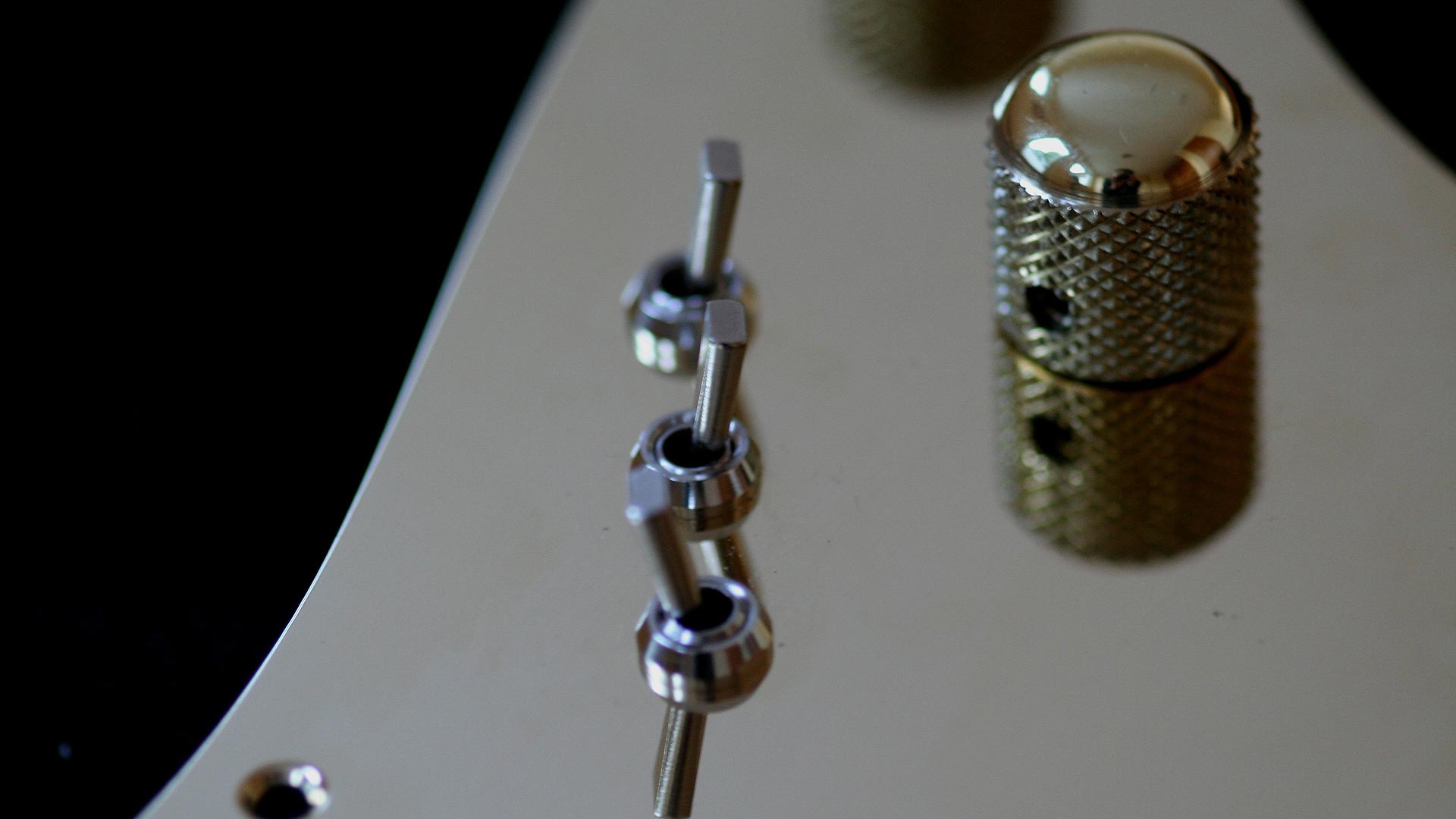
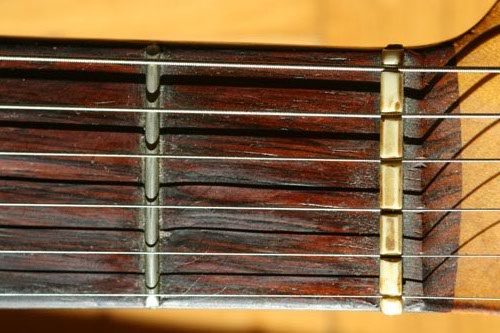
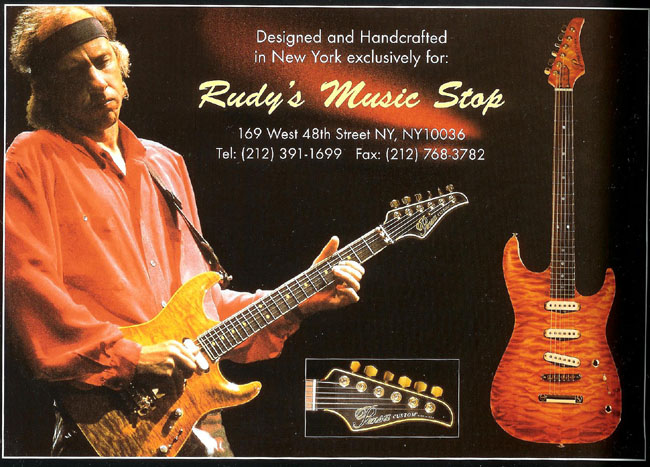
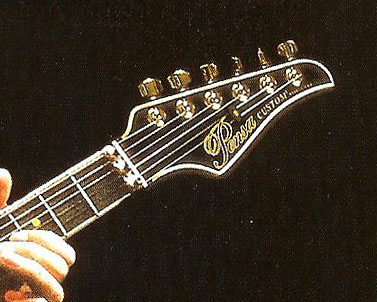
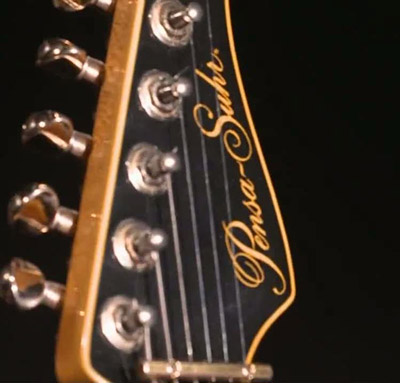
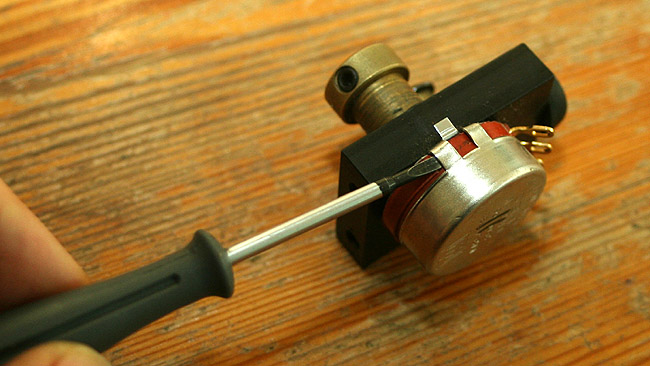
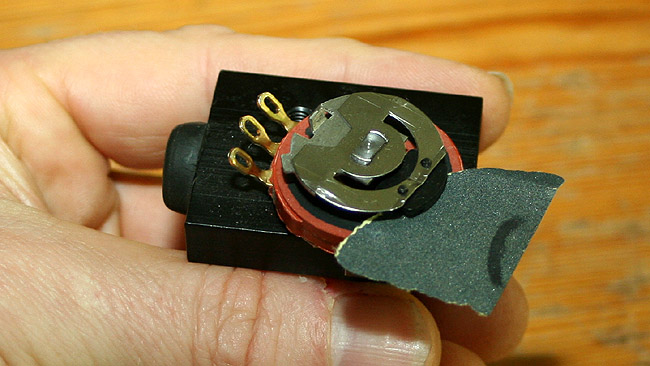
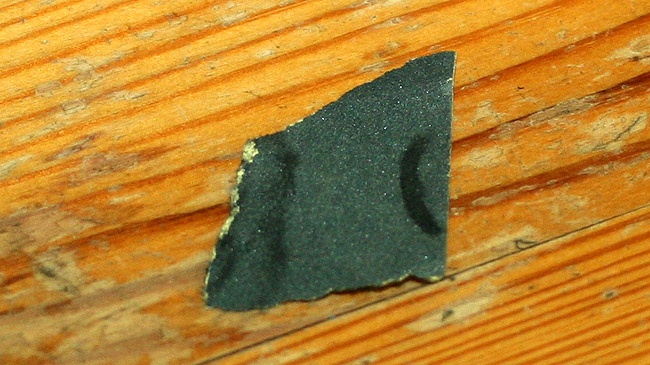
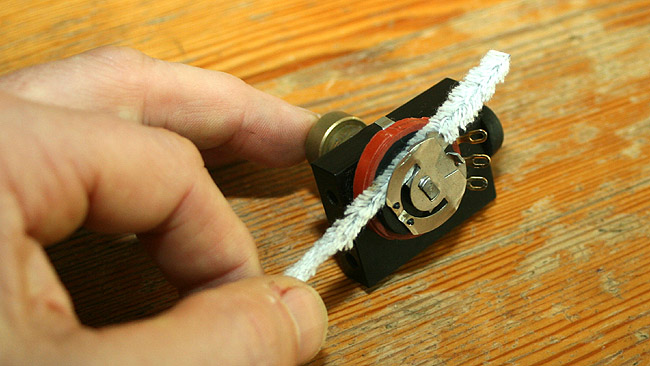
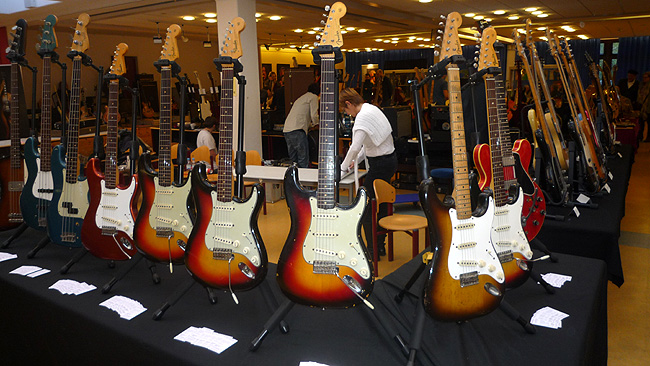
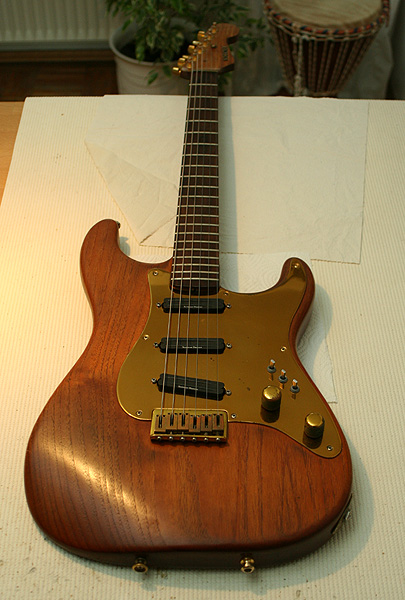
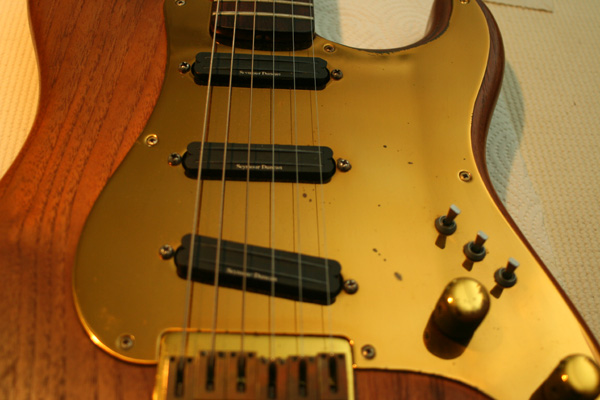
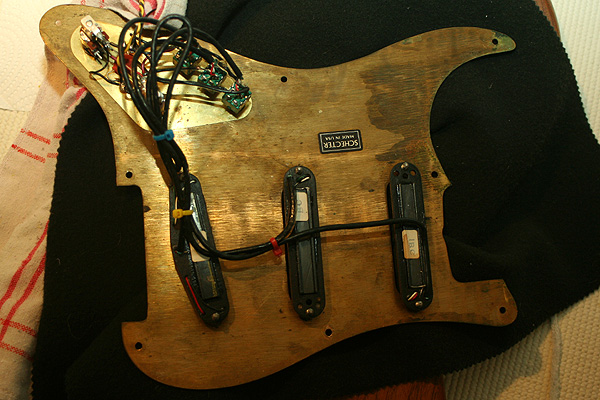
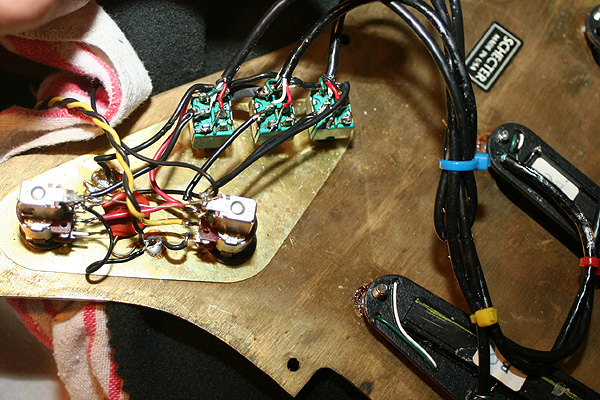
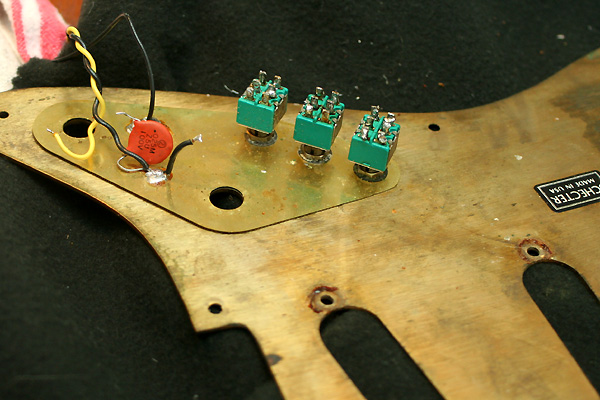
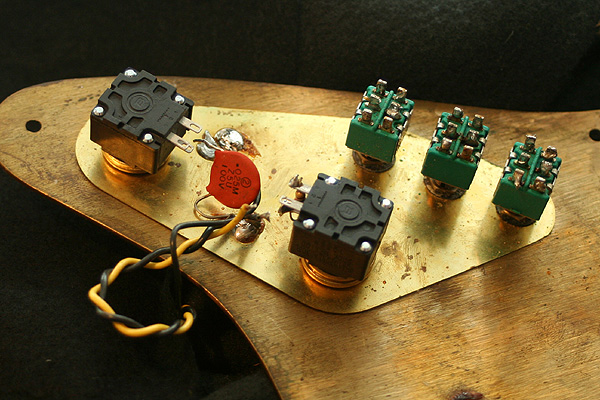
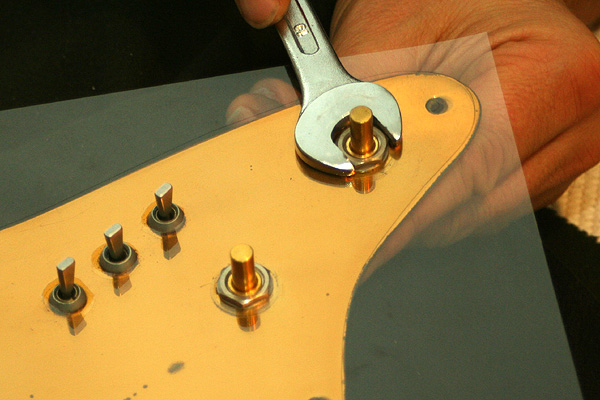
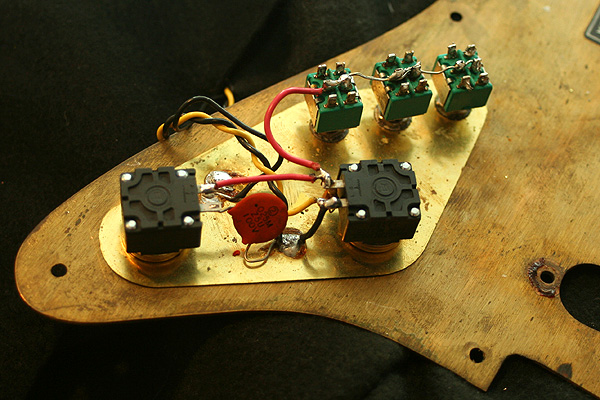
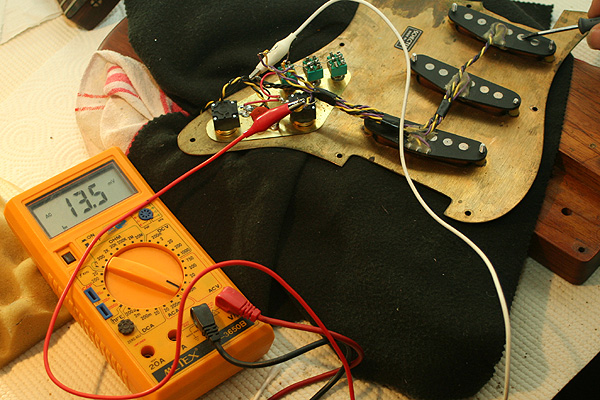
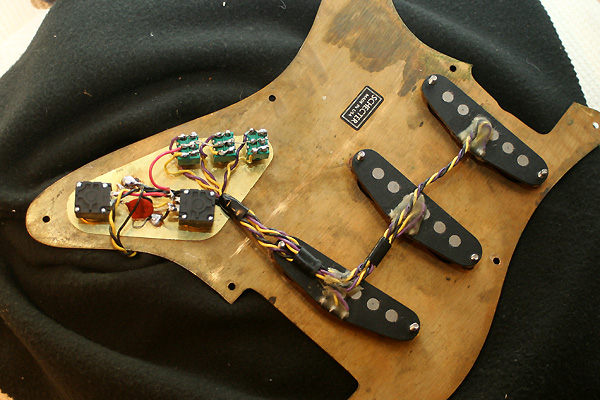
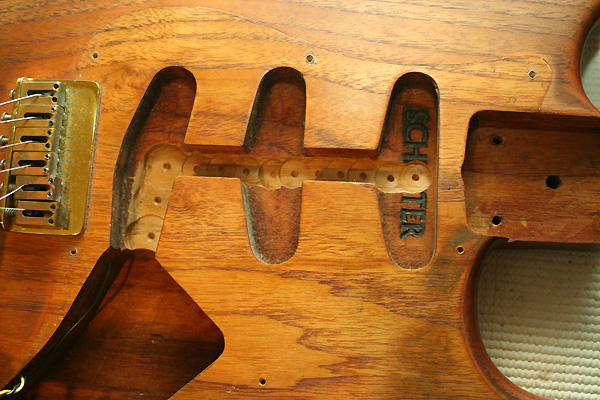
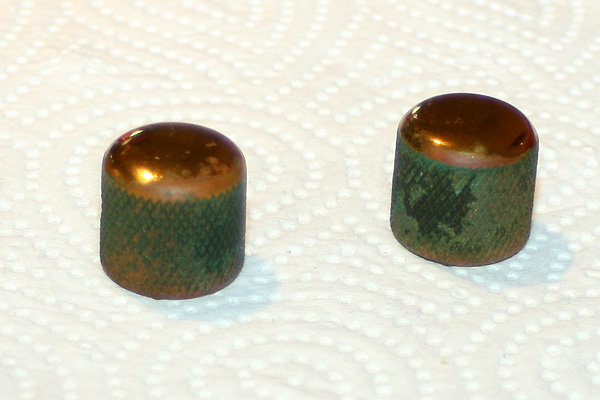
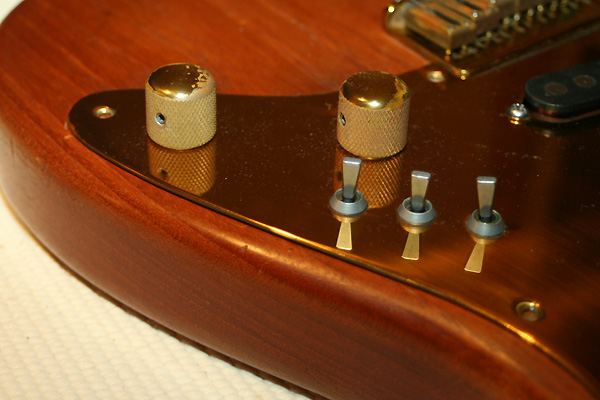
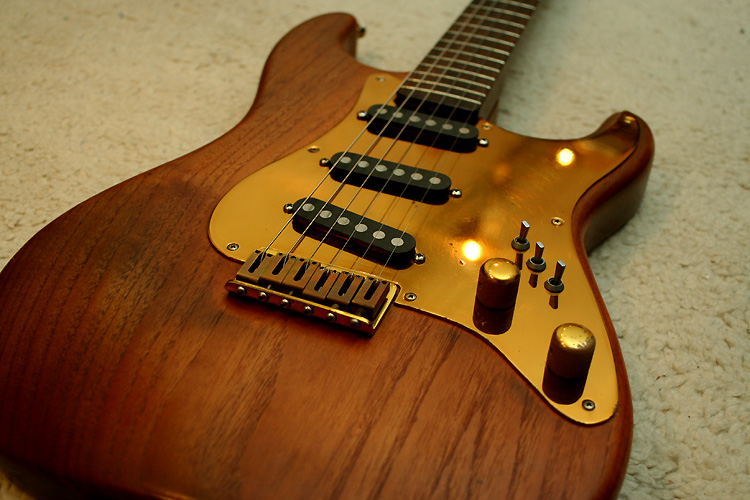
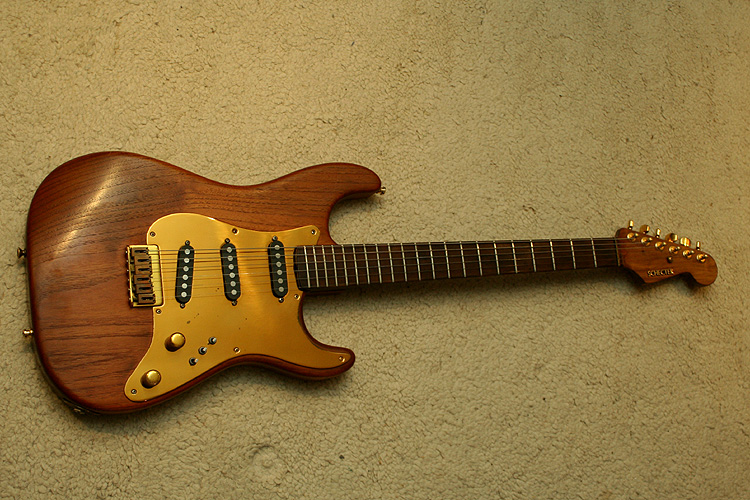 Watch out for more details and pictures of this wonderful guitar in a future blog post.
Watch out for more details and pictures of this wonderful guitar in a future blog post.